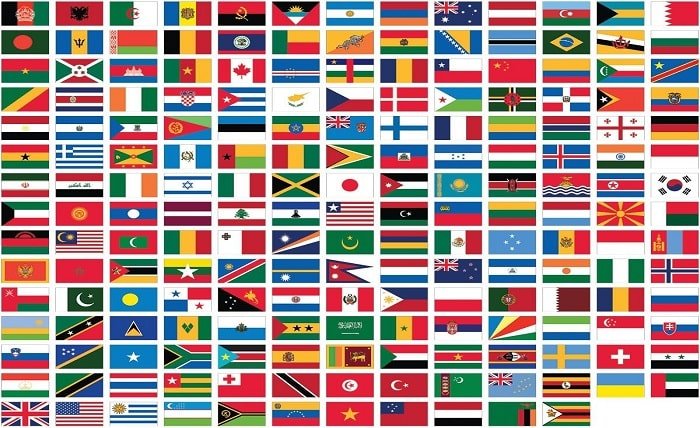Exploring the Significance of the Image of a Flag

Flags are among the most powerful symbols known to humankind. The image of a flag carries cultural, historical, and emotional weight, often representing an entire nation, community, or cause. In this blog, we will delve into the multifaceted significance of the image of a flag and its enduring impact on society. Whether it’s a national flag fluttering in the wind or a custom flag symbolizing a movement, these images resonate deeply in human consciousness.
The History Behind the Image of a Flag
The image of a flag has a storied history that dates back thousands of years. From ancient civilizations like Mesopotamia to modern-day nations, flags have always served as visual identifiers. The earliest flags were often symbols carried into battle to denote allegiance or territorial claims. Today, the image of a flag is synonymous with national pride, unity, and identity.
National flags, such as the iconic Stars and Stripes of the United States or the tricolor of France, have become deeply ingrained in the cultural fabric of their respective countries. These images often feature colors, shapes, and symbols that carry profound historical significance. The simple yet impactful image of a flag can tell the story of a nation’s struggles, triumphs, and aspirations.
The Symbolism Embedded in the Image of a Flag
Every element within the image of a flag holds meaning. Colors, patterns, and emblems are carefully chosen to convey specific messages or values. For instance, the red in many flags symbolizes bravery and sacrifice, while white often represents peace and purity.
Consider the image of a flag like South Africa’s, which incorporates multiple colors to reflect the country’s diversity and unity after apartheid. Similarly, the maple leaf in Canada’s flag symbolizes the natural beauty and values of the nation. These visual elements ensure that the image of a flag is not merely decorative but a rich tapestry of symbolism.
How the Image of a Flag Evokes Patriotism
The image of a flag is a rallying point for patriotism. When people see their country’s flag, it often stirs feelings of pride, loyalty, and belonging. Sporting events, national holidays, and political rallies frequently feature the image of a flag to galvanize collective emotions.
During historical events like the moon landing, the image of a flag planted by astronauts became a symbol of human achievement. Similarly, the raising of the flag at Iwo Jima during World War II immortalized the bravery of soldiers and became an enduring patriotic image. These instances illustrate how the image of a flag transcends mere fabric to embody a nation’s spirit.
The Role of the Image of a Flag in Global Events
Flags play a prominent role in global events, where the image of a flag represents nations in international contexts. The Olympics, for example, showcase the flags of participating countries, emphasizing unity and friendly competition.
The United Nations’ flag—with its globe and olive branches—is a universal image of peace and cooperation. The presence of these symbols underscores the importance of the image of a flag as a tool for diplomacy and global representation. When conflicts arise, the image of a flag can also become a focal point for protests or expressions of solidarity, further highlighting its influence on international relations.
The Commercial and Creative Uses of the Image of a Flag
Beyond its political and cultural significance, the image of a flag is also used commercially and creatively. Businesses often incorporate national flags into their branding to emphasize patriotism or local pride. For instance, airlines like British Airways and Air Canada prominently display their country’s flag on their aircraft.
The image of a flag also inspires art, fashion, and design. From Andy Warhol’s pop art renditions of the American flag to clothing lines featuring flag-inspired patterns, this symbol has permeated creative industries. The versatility of the image of a flag allows it to transcend traditional boundaries and appeal to a broad audience.
The Digital Evolution of the Image of a Flag
In the digital age, the image of a flag has evolved significantly. Emojis featuring flags, digital illustrations, and virtual reality experiences have brought new dimensions to how we interact with this symbol. The image of a flag is now easily shareable across social media, allowing it to become a part of global conversations in real-time.
For example, during international crises or global celebrations, hashtags featuring the image of a flag often trend worldwide. This digital accessibility has amplified the visibility and relevance of the image of a flag, making it a dynamic part of modern communication.
Why the Image of a Flag Matters Today
The image of a flag remains relevant in today’s interconnected world. It continues to serve as a symbol of identity, unity, and shared values. Whether rallying people during protests or celebrating achievements, the image of a flag bridges cultural and linguistic divides.
As global challenges like climate change and social justice movements gain prominence, the image of a flag often becomes a unifying emblem. Custom flags, representing specific causes or communities, are increasingly common. These modern interpretations demonstrate that the image of a flag is not a static relic but an evolving symbol that adapts to the times.
Conclusion
The image of a flag is far more than a simple piece of cloth; it is a powerful emblem of identity, unity, and purpose. From its historical roots to its modern digital presence, the image of a flag continues to inspire, unite, and evoke deep emotions. As we navigate an increasingly globalized world, the image of a flag remains a testament to humanity’s enduring need for symbols that represent our collective dreams and values.
FAQs
1. Why is the image of a flag important? The image of a flag is important because it symbolizes identity, unity, and shared values. It represents nations, causes, and communities.
2. What does the image of a flag represent? The image of a flag represents cultural, historical, and emotional aspects, often symbolizing a nation’s identity, values, and aspirations.
3. How has the image of a flag evolved over time? The image of a flag has evolved from ancient battle standards to modern symbols used in digital media, art, and international representation.
4. How is the image of a flag used in global events? The image of a flag is used in events like the Olympics and the United Nations to represent nations, promote unity, and highlight global cooperation.
5. Can the image of a flag represent movements or causes? Yes, the image of a flag often represents movements or causes, such as LGBTQ+ pride or environmental activism, highlighting its versatility as a symbol.





